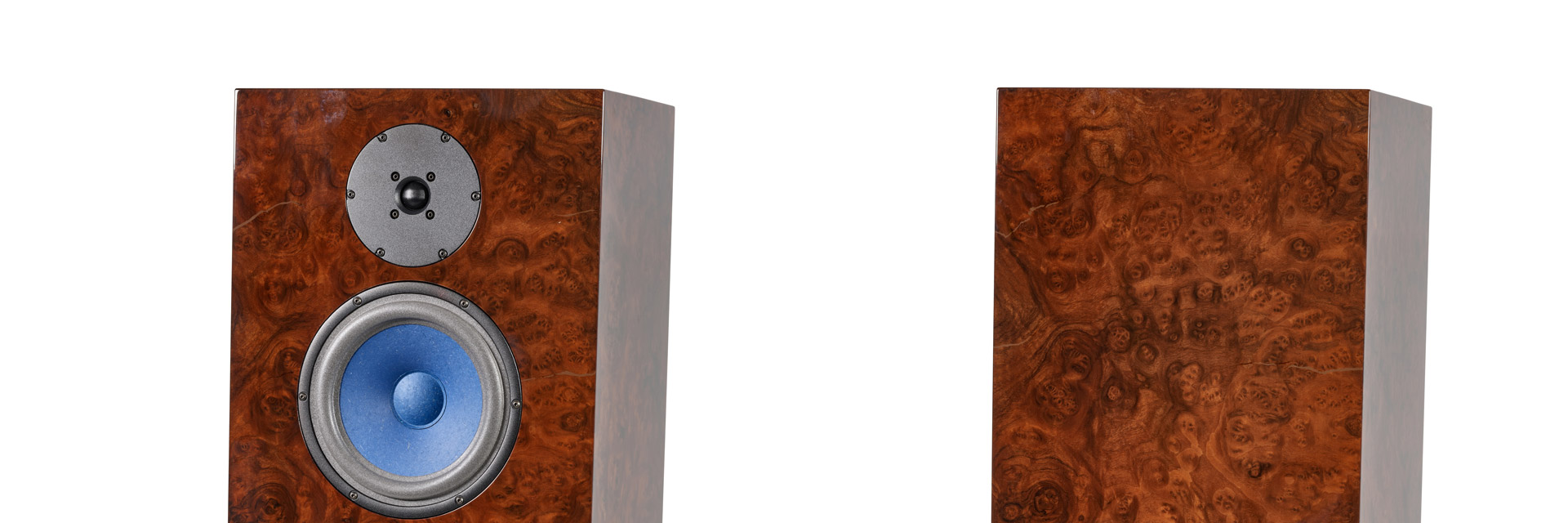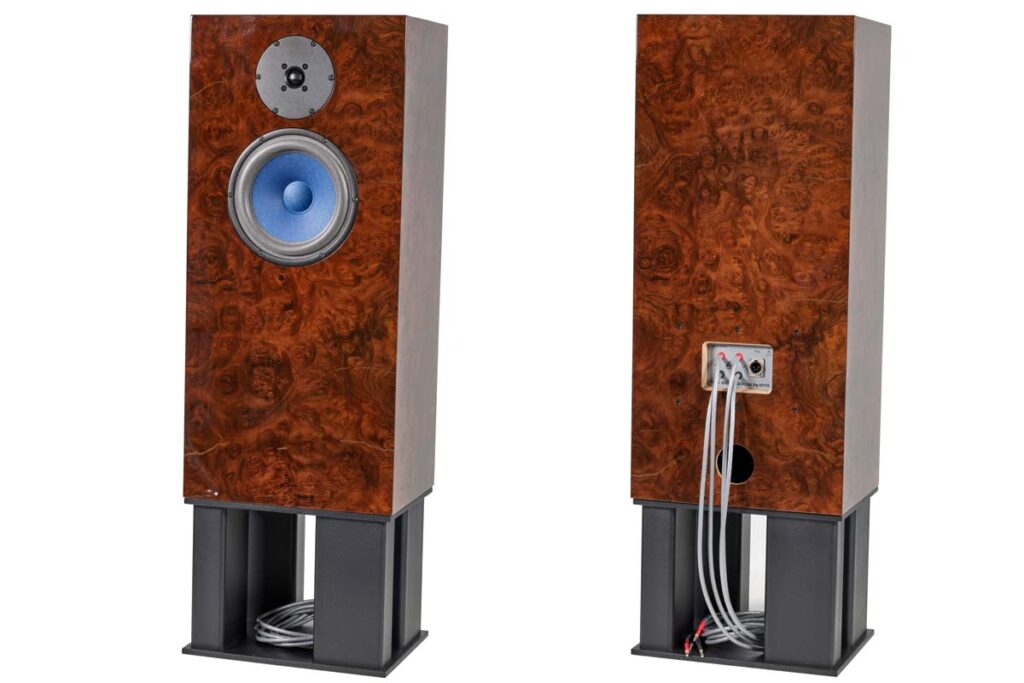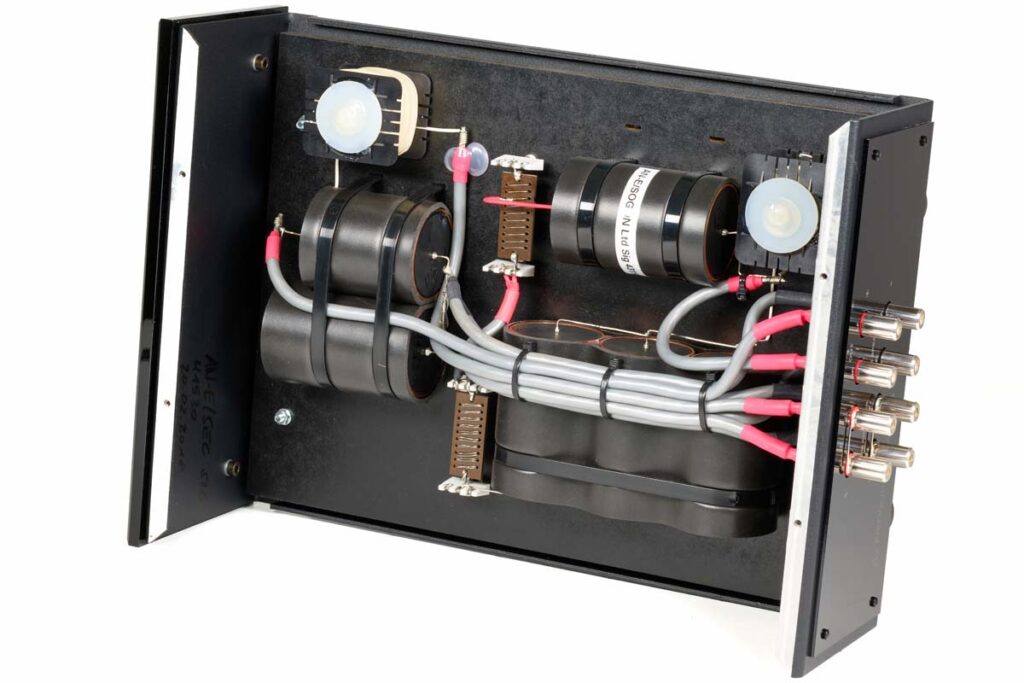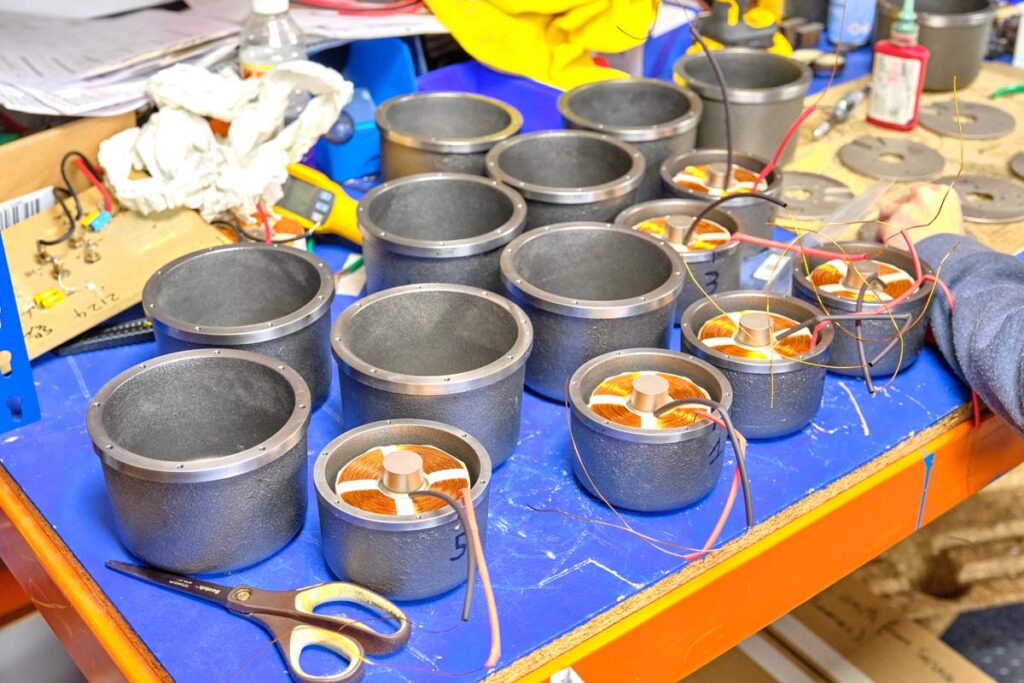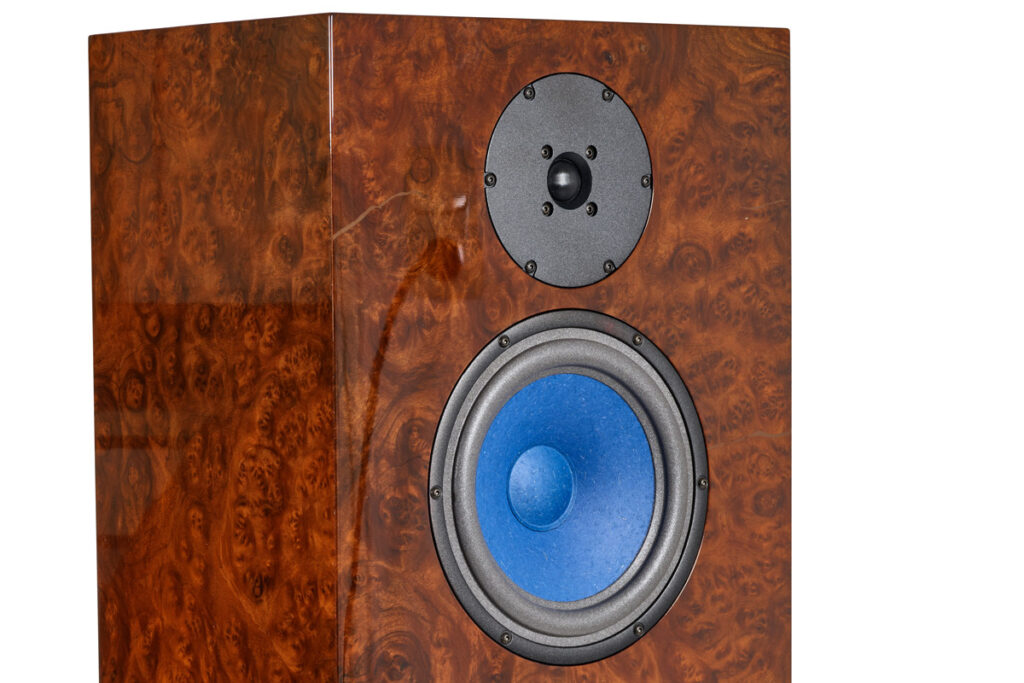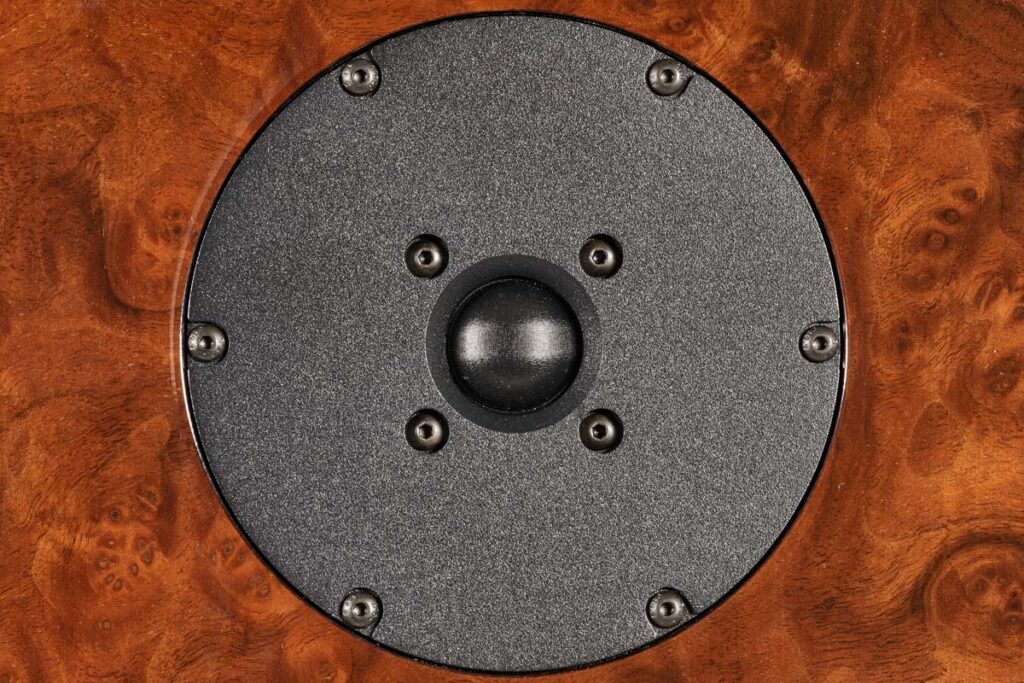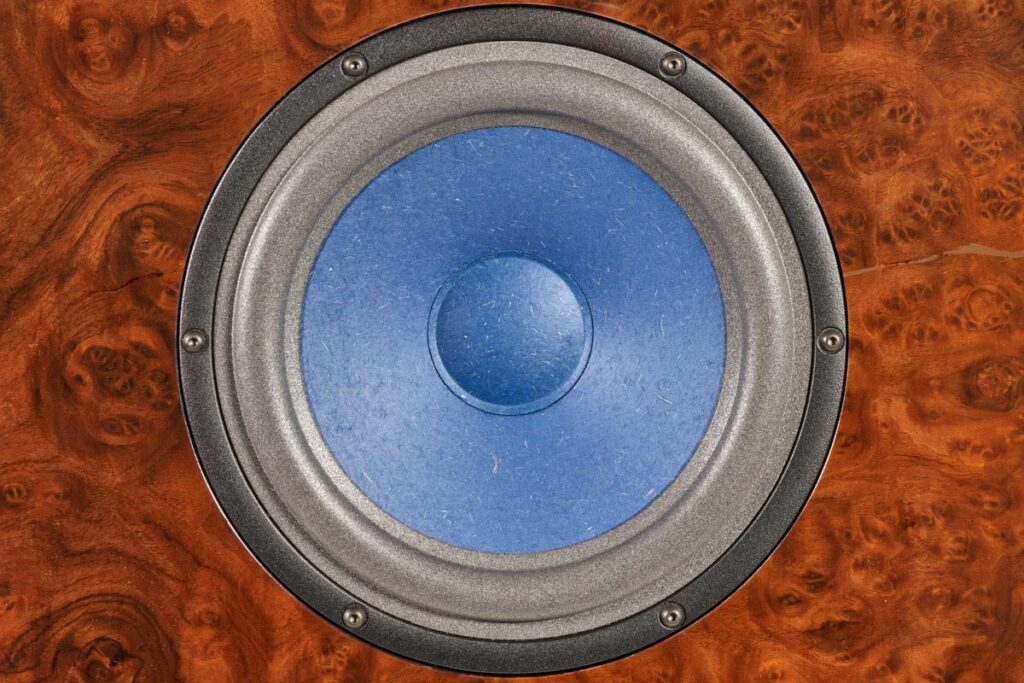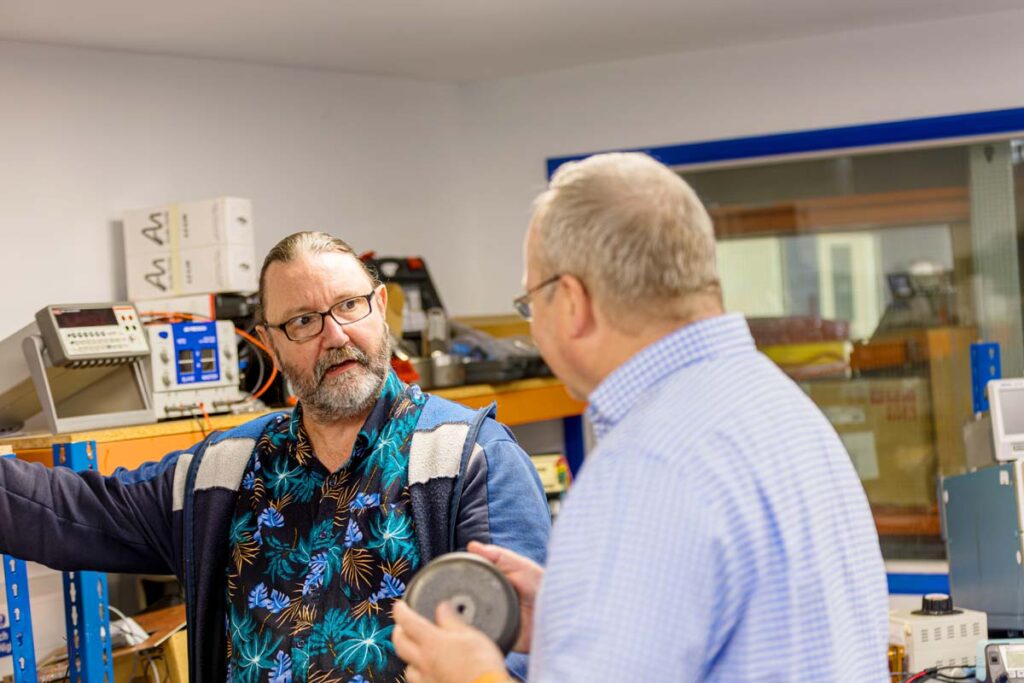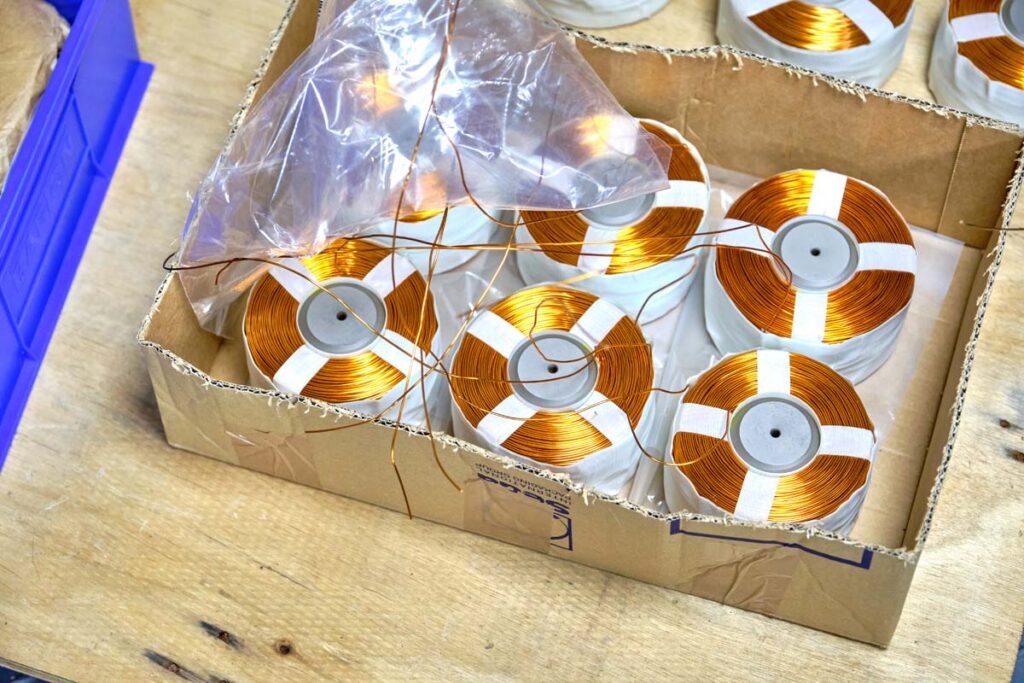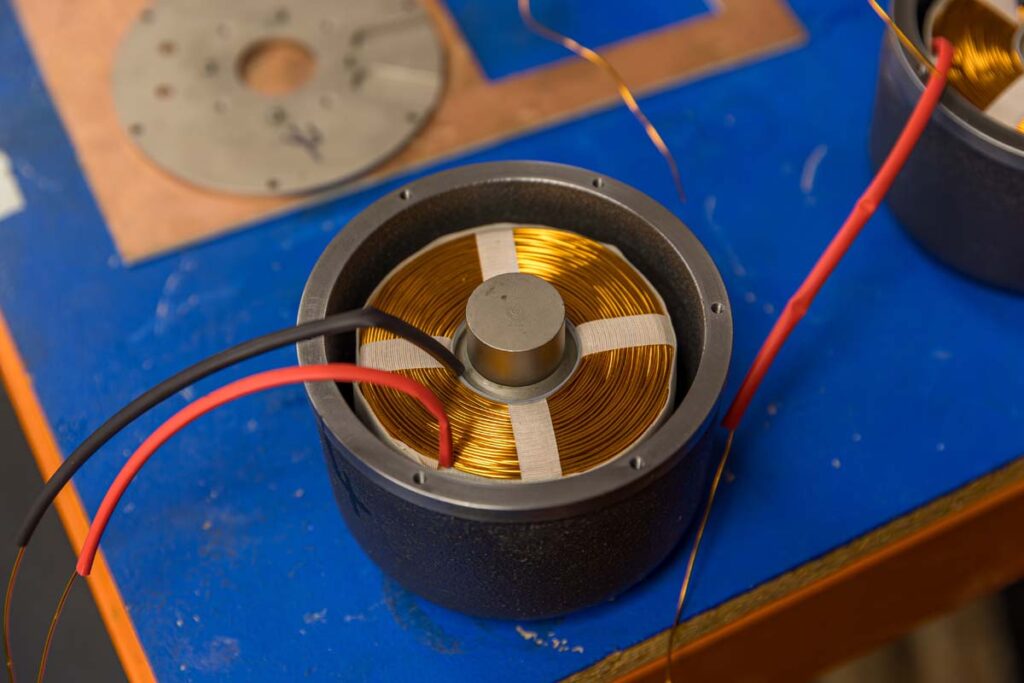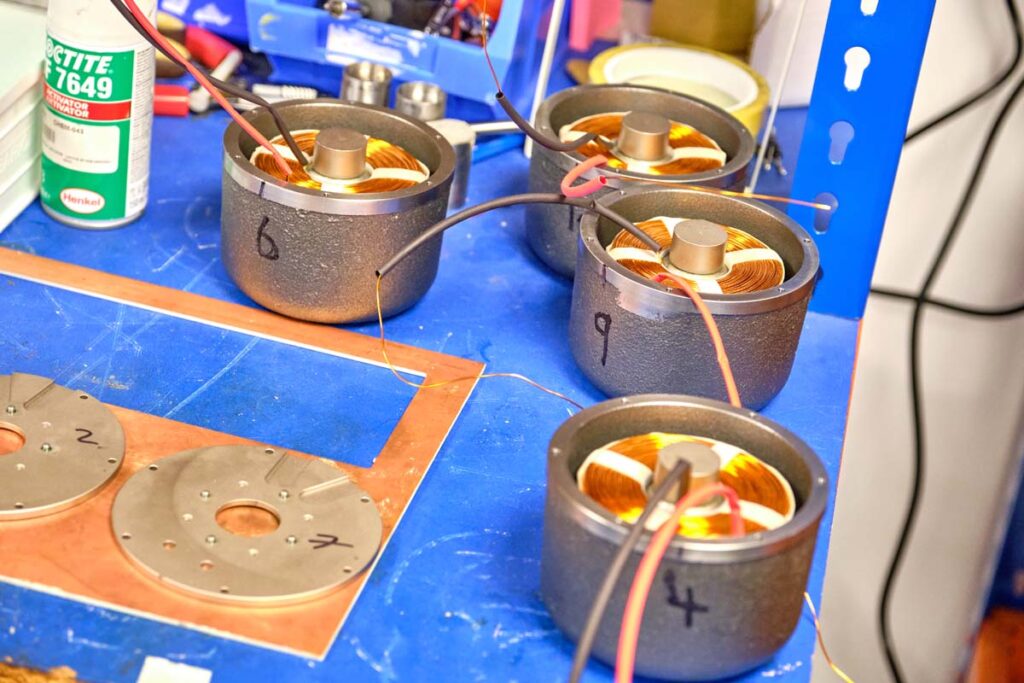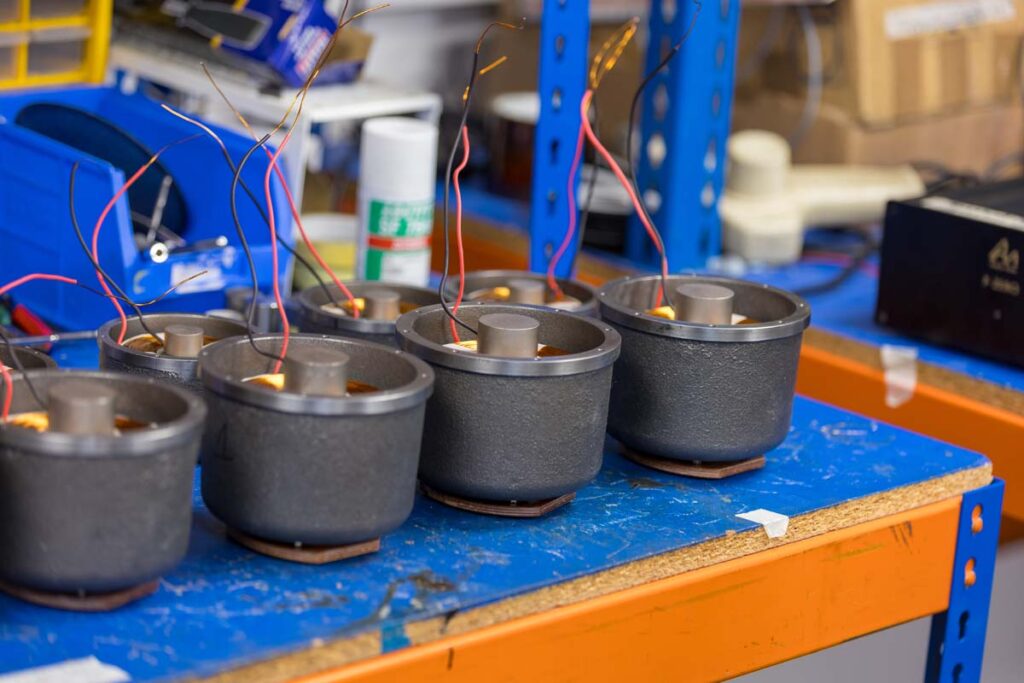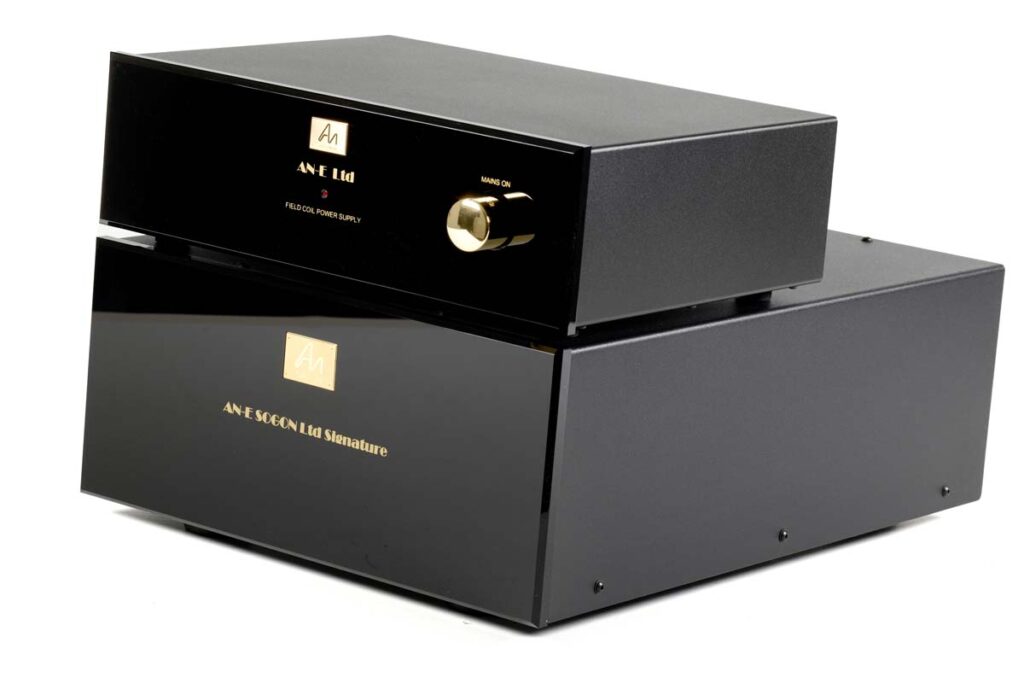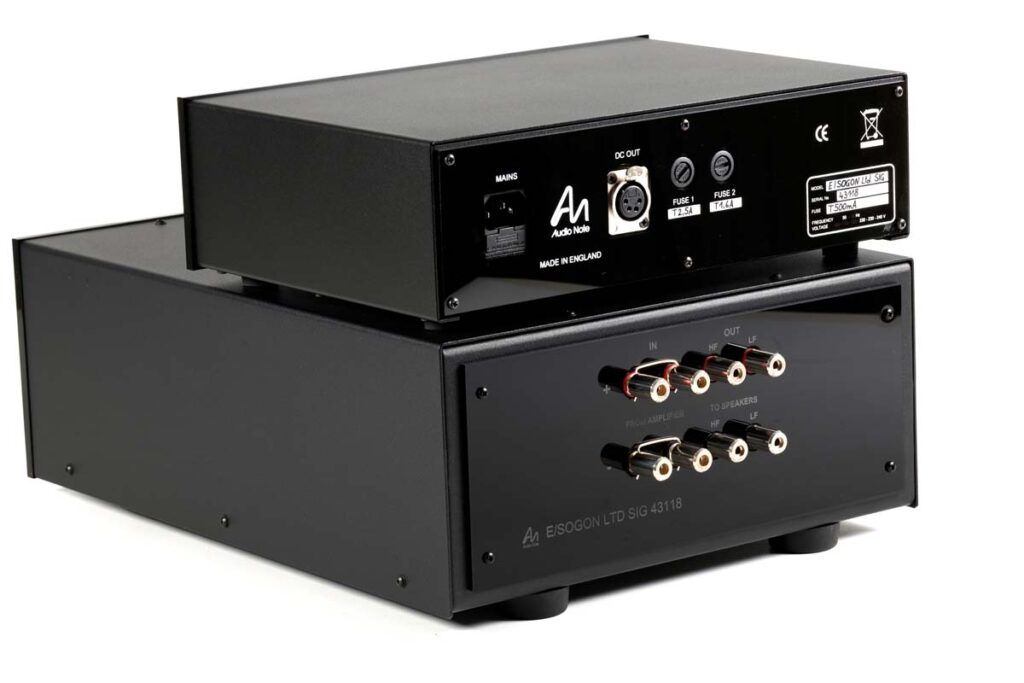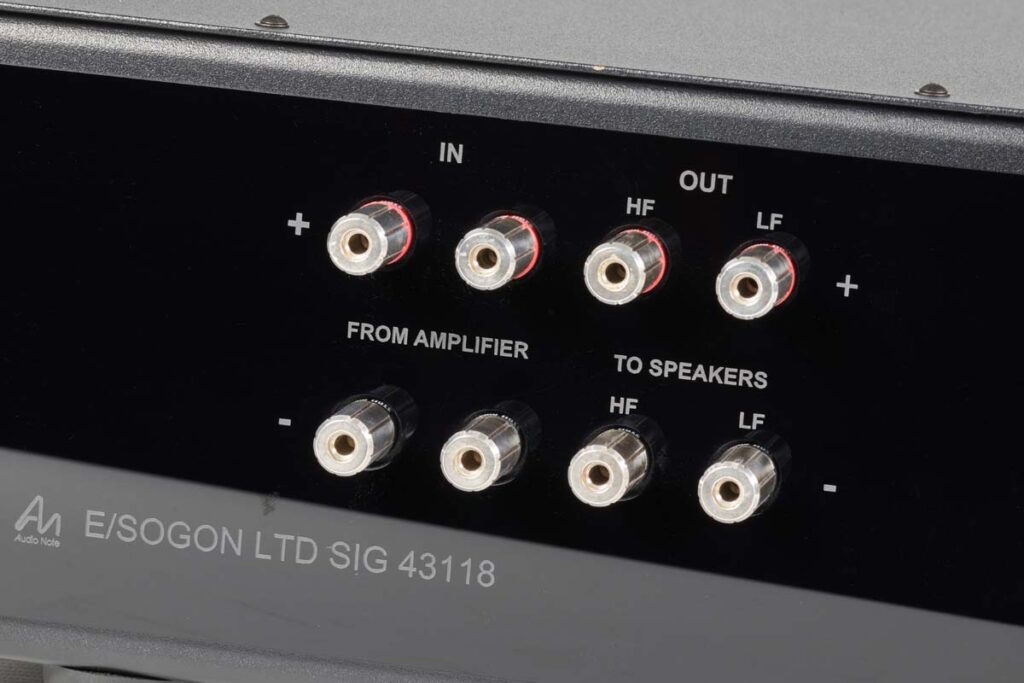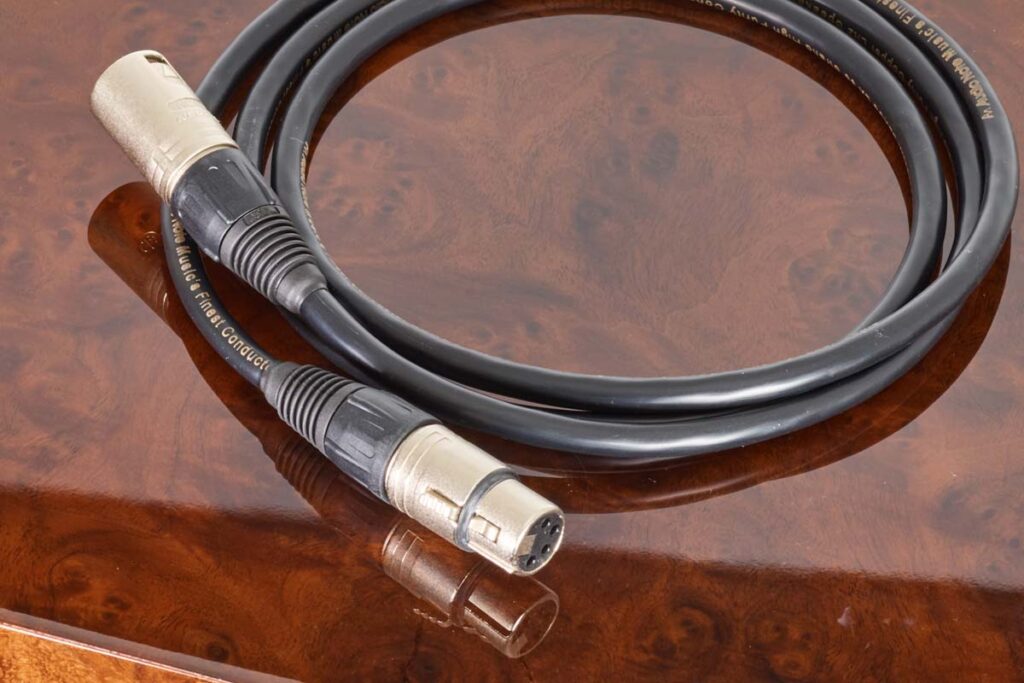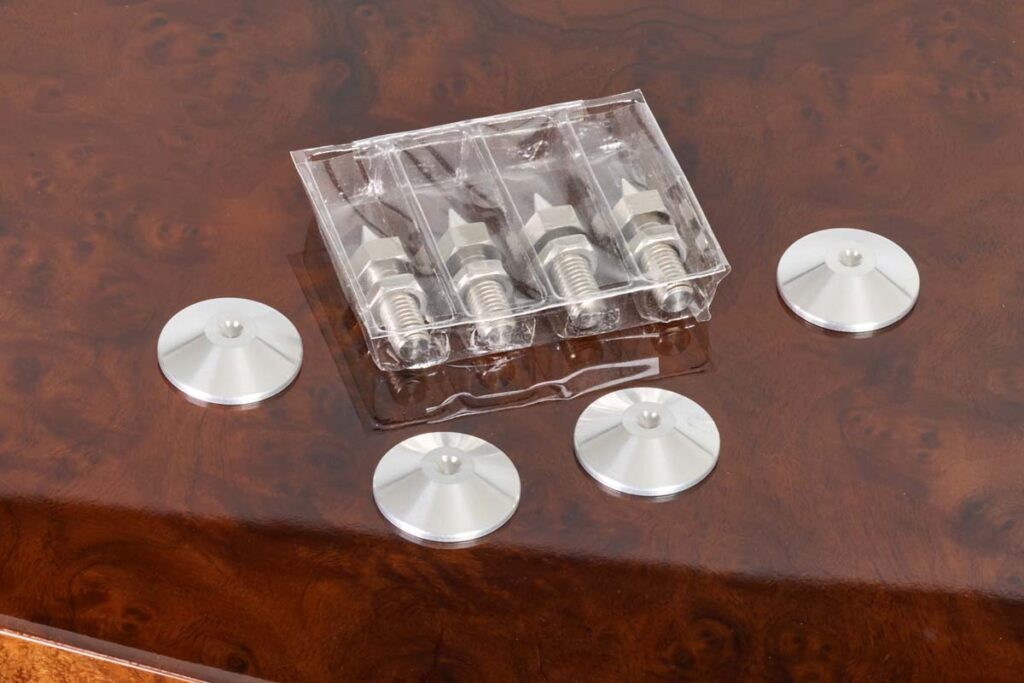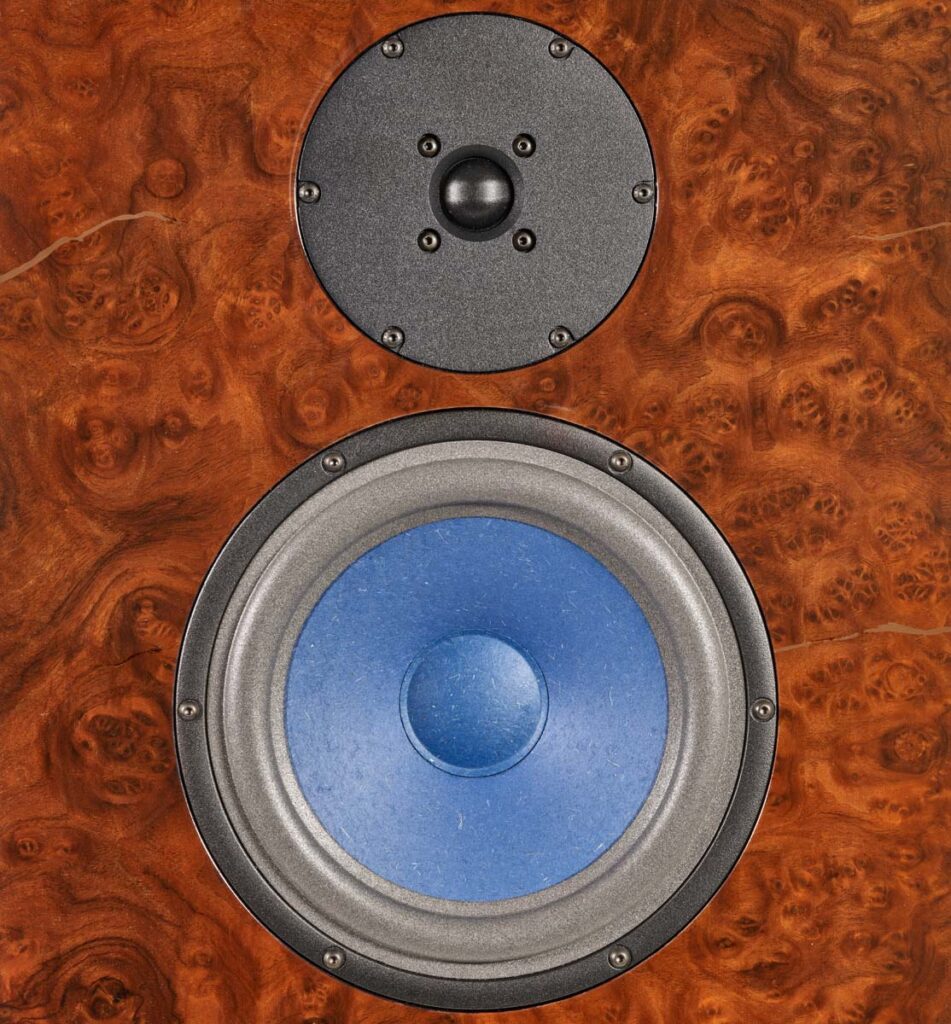As someone who deals with products on a daily basis, I always grin when the name Audio Note (UK) appears. But it’s not because I’m a passionate fan of the brand – that comes naturally. It’s that there are always fantastic stories behind the hi-fi gems from the British company. In our case today, it’s the AN-E Ltd Field Coil.
Andy Grove is the longer-serving of the two developers at Audio Note (UK). His colleague Darko Greguras featured in our company visit report. Like many of the company’s employees, Grove’s interest in music goes beyond mere listening and hi-fi. When he’s not working on new Audio Note models, he plays the electric guitar. And like anyone who uses tube amplifiers, he knows that every detail of the instrument matters: wood, machine heads, design, amplifier circuitry, etc. In particular, pickups and speakers are crucial: their magnets shape the sound most of all, and their interplay determines how the player can control dynamic expression. This is why metal, blues and folk guitarists prefer completely different instruments and amps.
And this got Andy Grove thinking. Across the board, modern hi-fi loudspeakers use ferrite-based permanent magnets. And there are compelling arguments to back them up, as no other material holds stronger magnetic charge. They are the “most powerful driver available”, and they almost exclusively support the high sensitivity figures typically found in loudspeakers today. This is not a bad thing – after all, finding a suitable loudspeaker is now much easier.
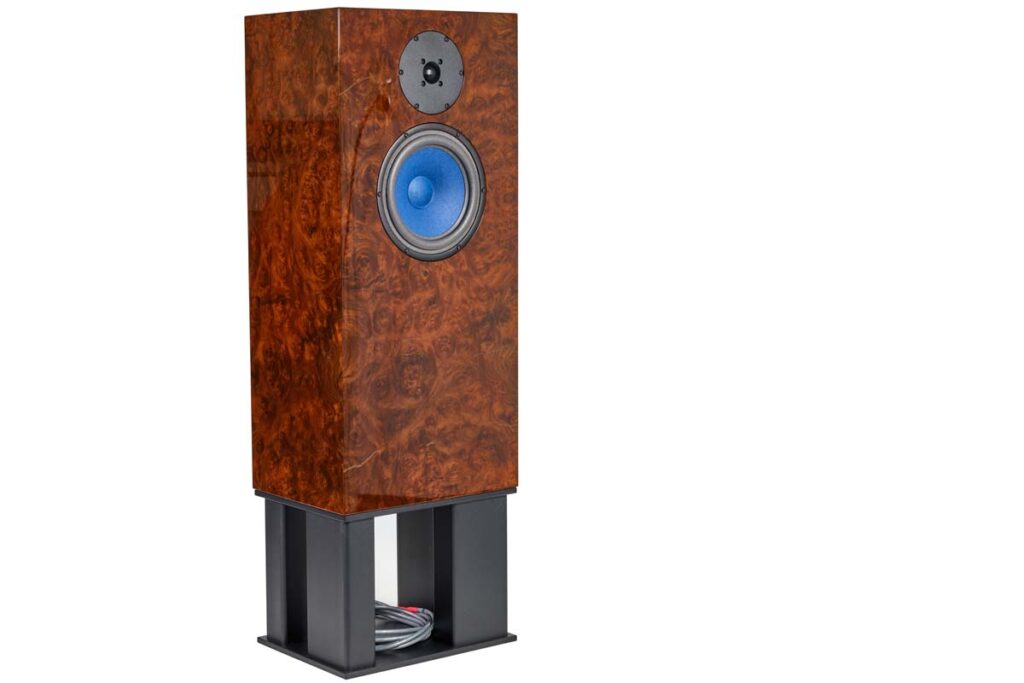
However, Andy Grove is quick to indicate that a ferrite driver’s bright light casts an equally dark shadow. The interaction between voice coil and magnet – which form the driver motor – isn’t nearly as harmonious and linear as is commonly believed. Once in motion, the coil generates its own magnetic field, which interacts with the permanent magnet in a colorful bouquet of interesting ways. This so-called Barkhaus noise, a kind of quantization effect, and distortion caused by hysteresis, are the most important phenomena to contend with. Both have their sonic effects in their names, and clearly these effects become more pronounced the beefier the driver is. Most developers choose the simple workaround: as they don’t want to give up high efficiency, so they use crossover filters to compensate for distortion and sometimes also “harshness.”
This is likely why the Audio Note developer (like many others) prefers to use alnico magnets, which cause fewer issues that need masking. They are weaker and produce a cleaner, more relaxed sound, which you can not only hear but also feel. Considering this, Andy Grove grew curious about trying the archetype of all loudspeaker drivers: the field coil.
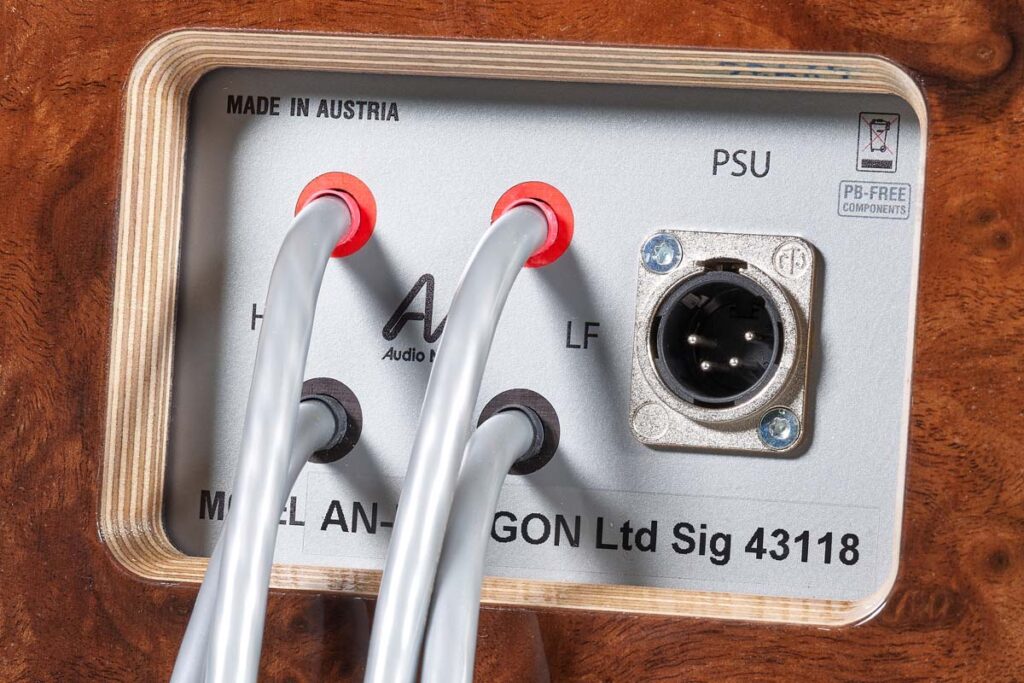
In the early 20th century it wasn’t yet possible to produce permanent magnets of satisfactory strength. Thus electric coils were used in their place, which( once energized) generate a useful magnetic field. The efficiency of these drivers lags behind that of permanent magnets. But keep in mind that the bare performance figures are no real indication of the musical talent of a setup. In a typical listening room, even exotic tube amplifiers with modest output power have a good grip on everything. Power headroom is only important when an amplifier cannot cope with the “complex load” presented by any given loudspeaker. Audio Note follows the system approach and always considers loudspeakers in the context of the amplifiers assigned to their “level.” Therefore, these concerns are irrelevant for the British company.
Andy Grove decided to put his plans into practice nearly ten years ago. However, after initial successes, he came up against nearly insurmountable obstacles. His early designs made from standard structural steel were inefficient and developed unacceptable temperatures. To his surprise, he also could not find a metalworking shop willing to manufacture components for him from other materials. This is because shaping voice coil formers and cover caps in the way they did it 100 years ago is no longer possible with today’s metals. The alternative – casting – was rejected by all the producers approached. It was far too complicated and costly for the projected quantities. Fortunately, Grove finally found a metal processing company near Dudley, in the Black Country of the West Midlands, that was not only eager to take on the project but also to bring in its own research spirit. The company has a long tradition, and several of its metallurgists were keen to rediscover “how they did it in the olden days”. But the real journey, the development, was only just beginning.
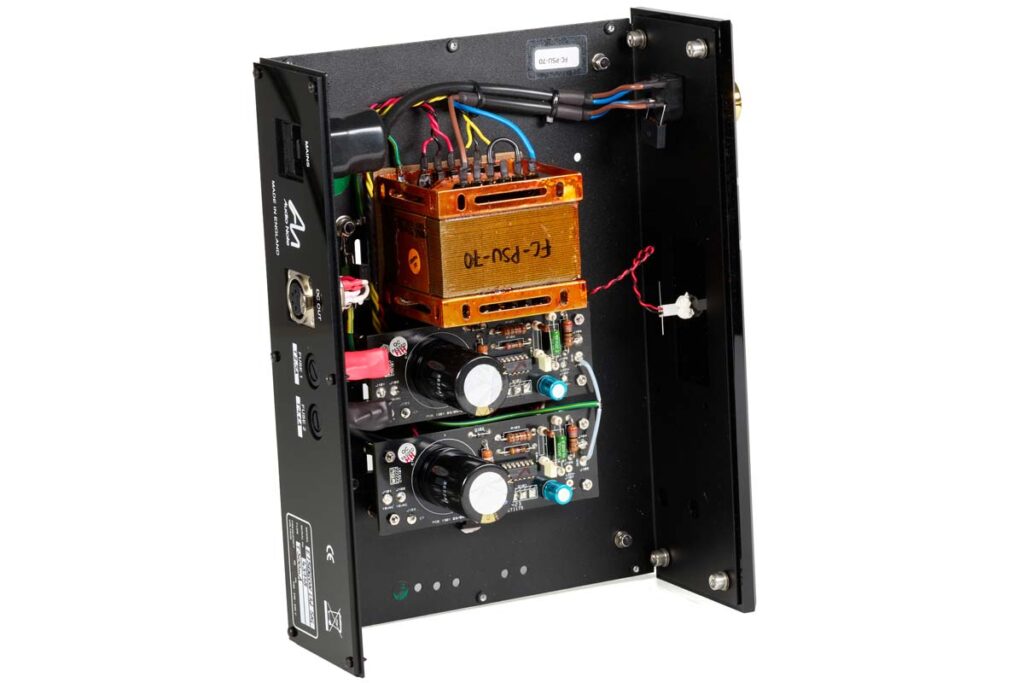
As Andy Grove told us, the metal experts quickly returned with tons of in-depth knowledge about alloys, their minimum material thicknesses, their respective magnetic interactions and advice on integrating these parameters. Grove jumpstarted the collaboration by obtaining samples of the suggested metals and having them milled into shape by a company near Brighton. These sample experiments allowed him to only call on the Black Country company when he found a material with a promising costly evaluation. Thereby he gradually inched his way towards the final driver design, in turn tripling the efficiency. Although early prototypes of the AN-E Ltd gobbled up 45 watts of supply voltage, the current model only uses 15 watts – rendering the temperature worries moot. And before I forget: It’s not only the mid-woofer that’s driven by a field coil, but the tweeter, too.
In comparison, developing the associated supply units was a walk in the park, which is not to say there were no roadblocks. As Andy Grove told us, he initially tried deliberately simple passive networks. These worked well on the laboratory power supply unit, but two crucial snags were revealed in the open field test. For one, the power grid isn’t stable: even slight fluctuations (in Germany, the current fluctuates between 220 and 240 volts depending on grid load) cause a passive network to drift out of its intended operating parameters. Moreover, the magnetic field of a coil also generates some undesirable effects, but these are largely handled by an active power supply. Therefore, Grove and his team developed a voltage generator with its own transformer and all the bells and whistles. To keep things at least outwardly simple, they packed everything into a neat little metal box.
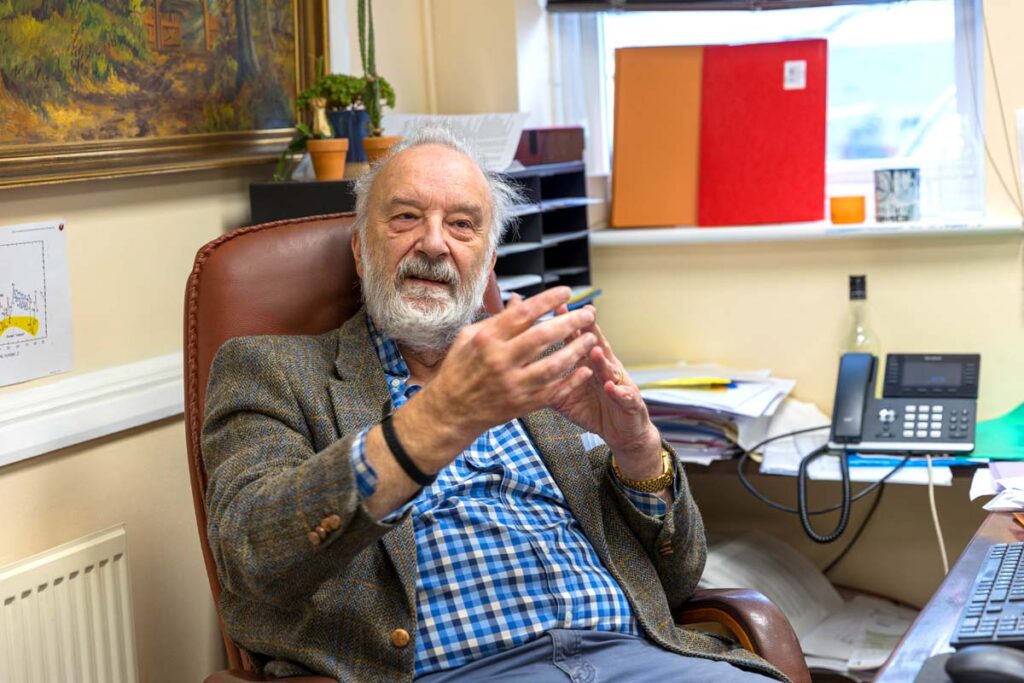
As you may know, Audio Note doesn’t just develop fantastic hi-fi concepts. Apart from a few exceptions – which can be found in more affordable entry-level models such as the Zero series or the Cobra integrated amplifier – the British manufacturer relies almost entirely on in-house developed components and ingredients. From the transformers to the capacitors and the coils, all elements of an AN-E Ltd are produced on-site in Partridge Green. Furthermore, the developers used only the finest components for their top-of-the-range loudspeakers, including their own pure silver wiring. For the speakers under review, their Level 5 SOGON-LX cable is used internally and between the drive units and the external crossovers. Less expensive models use their SPx silver cable and the flagship model uses their Level 6 SOOTTO-LX. But don’t think that they just screwed the most expensive of everything into the speaker boxes.
During our visits, we were given access to the final tuning of the products, which can take years. This consists of listening, listening and then listening even more. Just like Andy Grove, Managing Director Peter Qvortrup refuses to compromise in this aspect. He doesn’t just want to listen to music: he wants to witness the recording process in his living room and understand the ideals and ideas that drove composers and musicians to create. He passionately collects shellac and mono recordings because, in his opinion, only the originals convey the original spirit. But they don’t necessarily have to be old productions. Qvortrup loves variety in his listening sessions, mixing Weill’s and Brecht’s Dreigroschenoper in a recording from 1947 with The Sickness by Disturbed in our presence, only to then play some techno and alternative rock.
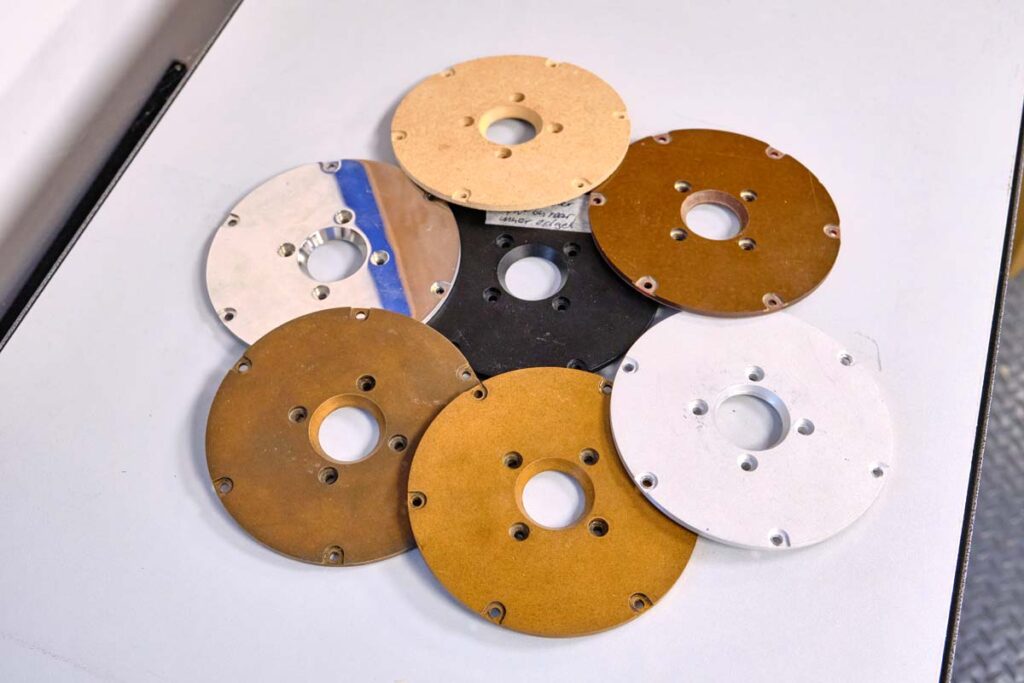
During our visit 14 months earlier, the AN-E Ltd was being powered by the latest iteration of its supply unit at the time. Older versions were piled up around the room, witnessing all the studies and development processes. Everything had been tried, every sensible combination tested, until the goosebumps on Grove and Qvortrup’s arms were exactly as they desired. The AN-E naturally underwent the same process. Since its basic version, its concept has been repeatedly scrutinized and continuously improved over the decades.
“Our” AN-E Ltd Field Coil arrived at the editorial office in the exquisite SOGON LTD. variant, along with a Jinro integrated amplifier, power supply units and two incredibly heavy stands. To my astonishment, we spent practically the entire production moving, listening to and then repositioning them to ever-changing places in our listening room. In fact, the British speakers are designed in the purest sense of the term “old-school”. The mid-sized bass reflex cabinets of the AN-E retain only the bare essentials, including leaving out internal bracing, to achieve maximum “liveliness”. To get the comparatively compact speaker to play in our medium-sized listening room (approximately 52 m2), it must be placed close to a wall, preferably near the corners of the room. With this in mind we quickly found reasonably suitable positions. However, the positions in the corners of the room created a slightly too-wide base width, so we moved our sofa back by about three quarters of a meter – and things clicked into place again. Next, the fine-tuning began. The AN-E Ltd presents as a “working loudspeaker”. In contrast to many of the current convenience-oriented models, everything here – form the positioning to the amplifier and the wiring – must mesh perfectly. You don’t need to worry about this, because with a speaker of this class the dealer takes care of it anyway. But even after the speaker has been set up, it is worth adjusting the position inch by inch. We resorted to the tried and true trick of setting up without spikes. This allowed us to move the monitors on their bases fairly easily, slide them back and forth and adjust toe-in. Whenever the change yielded an improvement, we moved the stand to match that position. And then there’s the moment when everything snaps into place – this is when you add the spikes and enjoy yet another helping of tightness in the presentation.
Summing up the sonic capabilities of the Field Coils in a few words is as meaningless as describing a high-performance sports car as “fast”. In fact, after six weeks with the AN-E Ltd, I can confirm that you feel rather than hear the decisive arguments. This is clear when it comes to fast impulses and attacks, for example when a single guitar string is struck and you suddenly feel like you can see the guitarist’s pick. Or when a vocal recording appears vivid and alive in the room and you lose all sense that the sound is coming from two wonderfully veneered boxes. The AN-E Ltd acoustically disappears in the room. Since Audio Note – as usual – sticks to the two-way concept even with this larger model, the AN-E plays with a timing and musical cohesion that is maintained not only at the listening position, but also everywhere in the room (and beyond). In short: it is an experience you won’t forget.
The only thing we were denied in the FIDELITY listening room was a direct A/B comparison with an AN-E/SPx AlNiCo. Here I can quote what Andy Grove told us about his first experiences with the field coil: He didn’t notice any major differences, especially when moving to the field coil. At best, he noticed a more intense sense of relaxation from the new drivers. Then, a very brief cross-check with the SPx brought the immediate realization that there was no turning back for him…
Loudspeaker Audio Note (UK) AN-E Ltd Field Coil SOGON LTD.
Concept: 2-way loudspeaker with field coil drivers in a ported enclosure | Driver complement: 1 x 20 cm field coil bass driver (hemp cone, foam surround), 1 x 25 mm field coil tweeter (silk dome) | Connections: Bi-wiring terminals, four-pin SPU socket | Frequency response (-6 dB, room measurement): 18 Hz to 23 kHz | Impedance: 6 Ω | Recommended amplifier power: 8 to 150 W | Accessories: stand, PSU | Finishes: various real wood veneers (olive, rosewood, apple, walnut, macassar) or black high-gloss finish; PSU front panel in black or natural aluminum (custom colors on request and at extra cost) | Dimensions (W/H/D): 36/79/27 cm (without stand) | Weight: 29 kg (without stand) | Warranty period: 5 years | Price: model under review, € 141,150.00. Field Coil range starting from € 59,200.00
Audio Note (UK) Ltd.
Viscount House,
Units C, D & E, Star Road,
Star Trading Estate,
Partridge Green,
West Sussex,RH13 8RA
United Kingdom
Tel: +44 (0) 1273 830800

